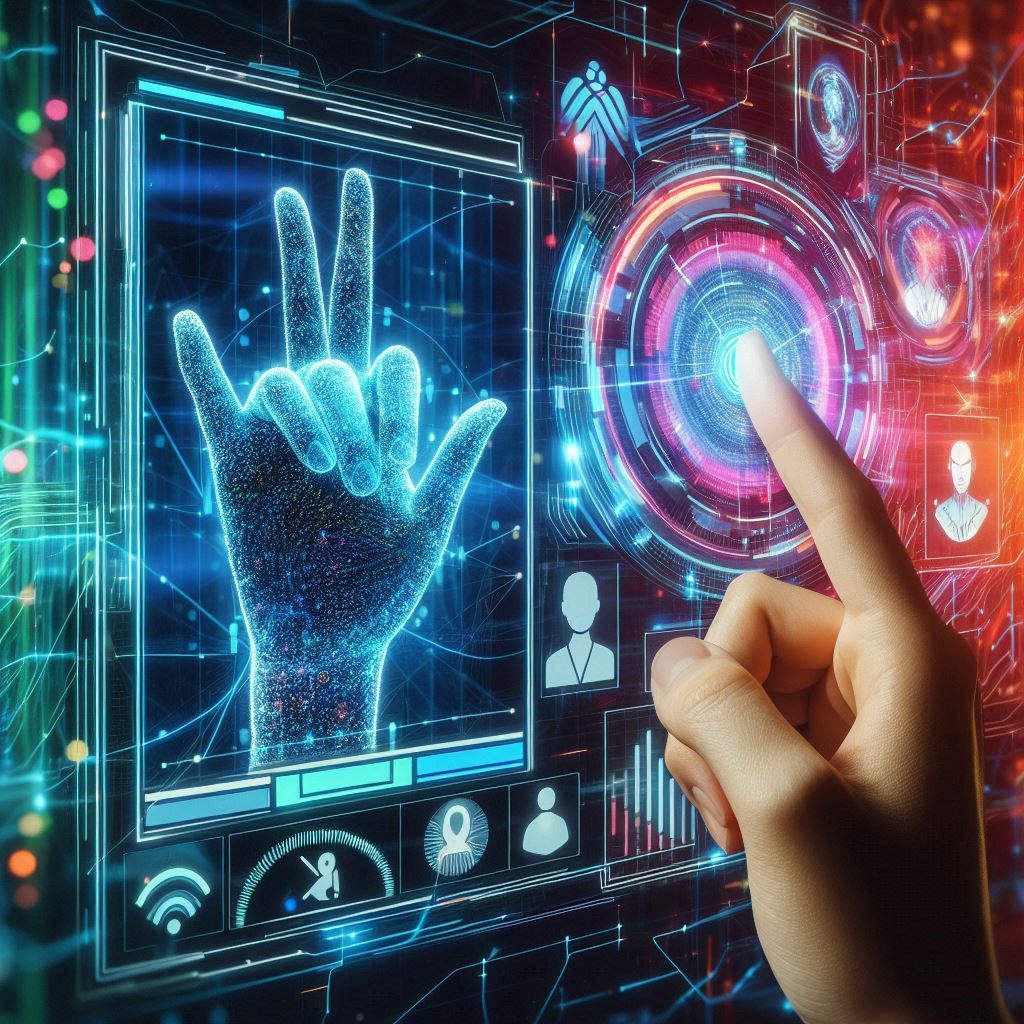
Exploring New Frontiers: How AI is Changing the Face of ASL Learning
- Posted by Cicada Sign
- Categories Blog
- Date October 19, 2024
- Comments 0 comment
In today’s rapidly advancing digital age, artificial intelligence (AI) is making a significant impact in the world of education, particularly in the way sign languages, like American Sign Language (ASL), are being taught and learned. AI-driven solutions are revolutionizing the way Deaf and Hard of Hearing (HoH) individuals, and even hearing people interact with ASL, making learning more accessible, engaging, and efficient. This post will explore how AI is changing the face of ASL learning by introducing new technologies and approaches to bridge communication gaps and facilitate education.
AI-Powered Tools for ASL Learning: One of the most exciting developments in AI-driven ASL learning is the emergence of tools that allow for more personalized and adaptive education. Platforms are using AI to recognize sign language gestures, provide real-time feedback, and even translate spoken or written language into ASL. AI tools analyze patterns in the learner’s progress and adjust the teaching methods based on individual needs.
AI programs, such as ASL Detect, offer real-time gesture recognition, helping users perfect their signing skills with immediate feedback. These tools use machine learning algorithms to continuously improve their ability to understand and interpret sign language. This level of personalized support was previously unimaginable, and it is allowing students to gain proficiency in ASL at their own pace.
Interactive Learning Experiences Through AI: The integration of AI in learning apps has also introduced interactive experiences that go beyond traditional classroom settings. AI chatbots, for instance, can simulate conversations in ASL, allowing learners to practice dialogue in real-time. One example is GoSign, a platform where AI-driven conversations assist students in practicing fluent ASL exchanges. These dynamic platforms empower learners with flexibility, allowing them to engage in dialogue at any time, without the need for a live tutor.
Moreover, AI-enhanced learning systems offer a range of multimedia experiences to cater to various learning styles. Videos, visualizations, and interactive simulations are now common tools that AI tailors to meet learners’ preferences, making ASL learning both engaging and immersive.
Bridging the Communication Gap with AI: Another significant advantage AI provides is the ability to bridge communication gaps between the Deaf and hearing communities. Translation tools, powered by AI, can convert spoken language into ASL in real-time and vice versa. These developments are becoming vital in inclusive classrooms, public spaces, and workplaces, where accessible communication between hearing and Deaf individuals is critical.
AI-driven applications, such as DeepASL, use neural networks to translate English sentences into ASL by analyzing grammar and syntax patterns unique to the language. This system breaks down barriers and offers an innovative solution for inclusive learning and interaction.
AI’s Role in ASL Literacy and Cultural Preservation: Beyond education, AI also plays an essential role in preserving and documenting ASL as a cultural asset. Video libraries of ASL storytelling, literature, and history are now being created with AI technologies to ensure that Deaf culture is accessible to future generations. AI enables more efficient cataloging and retrieval of sign language data, ensuring that ASL continues to thrive as a rich and evolving language.
For example, platforms like Signily and SignAll allow for the seamless creation of video content in ASL, helping to preserve narratives, folklore, and cultural expressions that may otherwise be lost. AI facilitates the indexing and archiving of such materials, allowing researchers and educators to share and explore ASL literature easily.
Challenges and Future Prospects: While AI presents transformative opportunities, challenges remain. Ensuring that AI accurately captures the nuances of sign language, including facial expressions and non-manual cues, is a complex task. The technology must continuously evolve to meet the demands of fluent ASL users and to maintain the cultural integrity of the language.
As AI technologies continue to improve, we expect to see more advancements that enhance learning experiences and communication for the Deaf community. The integration of virtual reality (VR) with AI holds particular promise for immersive learning environments, providing even more interactive and realistic scenarios for ASL practice.
Conclusion: AI is undeniably reshaping the landscape of ASL learning by offering more personalized, interactive, and accessible experiences. As AI continues to evolve, it has the potential to break down long-standing communication barriers and facilitate more inclusive learning environments. At Cicada Sign, we are committed to staying at the forefront of this exciting technological evolution to ensure that the Deaf community benefits from these advancements. Our mission remains to empower learners, preserve Deaf culture, and provide accessible resources that enhance ASL education through innovative approaches.
Join us on this transformative journey, as we explore the vast possibilities that AI brings to the Deaf community. Subscribe to our newsletter for updates on the latest AI-driven tools and resources that can help elevate your ASL learning experience.

I Letter in ASL
“AI has the power to bridge communication gaps by offering real-time ASL translation tools, making inclusive interactions more accessible than ever before.”

“As AI evolves, its role in preserving Deaf culture and enhancing ASL literacy becomes a critical tool for the future of sign language education.”



